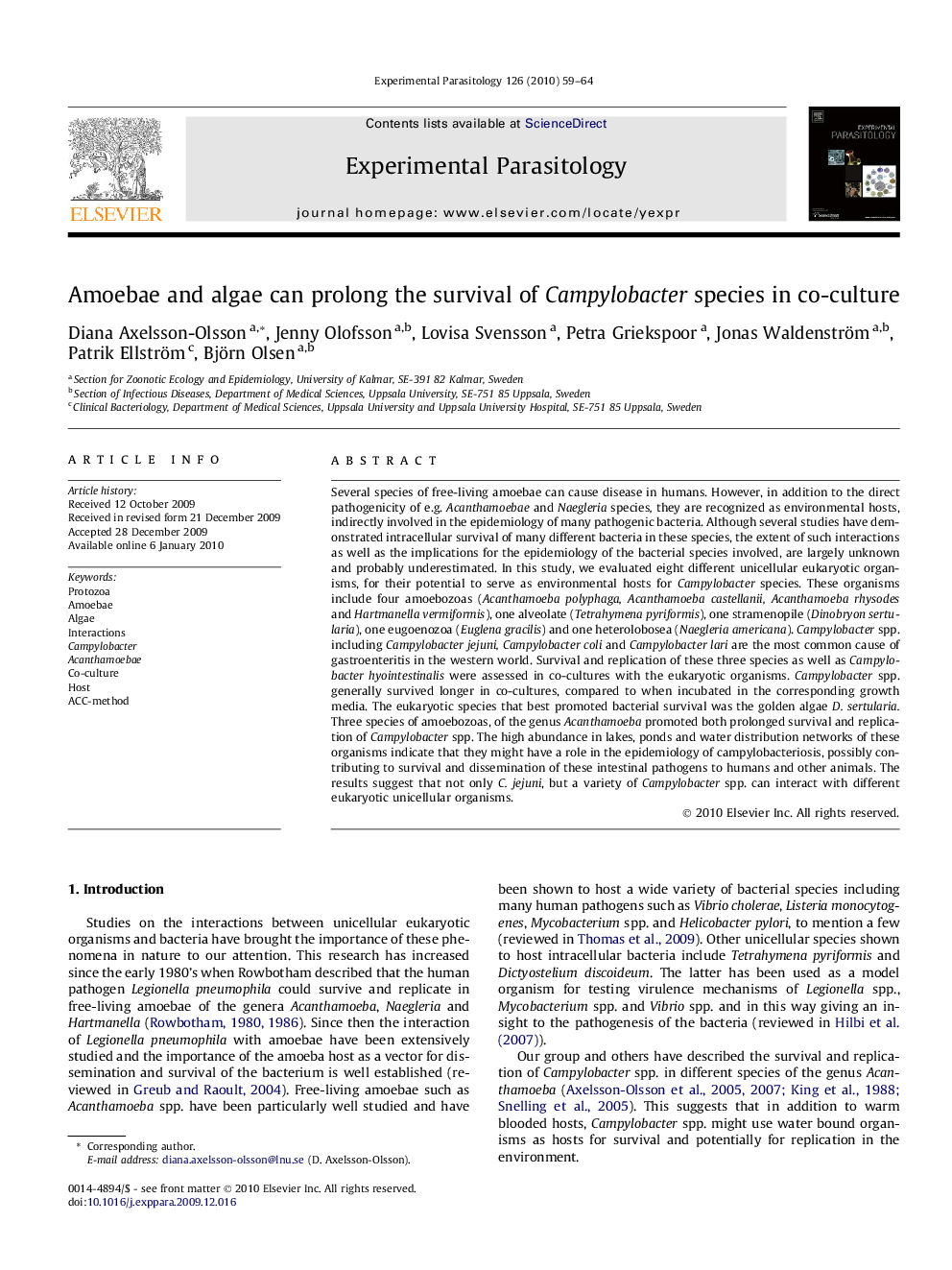| کد مقاله | کد نشریه | سال انتشار | مقاله انگلیسی | نسخه تمام متن |
|---|---|---|---|---|
| 4371616 | 1302532 | 2010 | 6 صفحه PDF | دانلود رایگان |
عنوان انگلیسی مقاله ISI
Amoebae and algae can prolong the survival of Campylobacter species in co-culture
دانلود مقاله + سفارش ترجمه
دانلود مقاله ISI انگلیسی
رایگان برای ایرانیان
کلمات کلیدی
موضوعات مرتبط
علوم زیستی و بیوفناوری
ایمنی شناسی و میکروب شناسی
انگل شناسی
پیش نمایش صفحه اول مقاله

چکیده انگلیسی
Several species of free-living amoebae can cause disease in humans. However, in addition to the direct pathogenicity of e.g. Acanthamoebae and Naegleria species, they are recognized as environmental hosts, indirectly involved in the epidemiology of many pathogenic bacteria. Although several studies have demonstrated intracellular survival of many different bacteria in these species, the extent of such interactions as well as the implications for the epidemiology of the bacterial species involved, are largely unknown and probably underestimated. In this study, we evaluated eight different unicellular eukaryotic organisms, for their potential to serve as environmental hosts for Campylobacter species. These organisms include four amoebozoas (Acanthamoeba polyphaga, Acanthamoeba castellanii, Acanthamoeba rhysodes and Hartmanella vermiformis), one alveolate (Tetrahymena pyriformis), one stramenopile (Dinobryon sertularia), one eugoenozoa (Euglena gracilis) and one heterolobosea (Naegleria americana). Campylobacter spp. including Campylobacter jejuni, Campylobacter coli and Campylobacter lari are the most common cause of gastroenteritis in the western world. Survival and replication of these three species as well as Campylobacter hyointestinalis were assessed in co-cultures with the eukaryotic organisms. Campylobacter spp. generally survived longer in co-cultures, compared to when incubated in the corresponding growth media. The eukaryotic species that best promoted bacterial survival was the golden algae D. sertularia. Three species of amoebozoas, of the genus Acanthamoeba promoted both prolonged survival and replication of Campylobacter spp. The high abundance in lakes, ponds and water distribution networks of these organisms indicate that they might have a role in the epidemiology of campylobacteriosis, possibly contributing to survival and dissemination of these intestinal pathogens to humans and other animals. The results suggest that not only C. jejuni, but a variety of Campylobacter spp. can interact with different eukaryotic unicellular organisms.
ناشر
Database: Elsevier - ScienceDirect (ساینس دایرکت)
Journal: Experimental Parasitology - Volume 126, Issue 1, September 2010, Pages 59-64
Journal: Experimental Parasitology - Volume 126, Issue 1, September 2010, Pages 59-64
نویسندگان
Diana Axelsson-Olsson, Jenny Olofsson, Lovisa Svensson, Petra Griekspoor, Jonas Waldenström, Patrik Ellström, Björn Olsen,